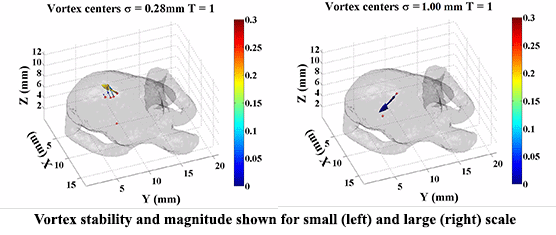Giacomo Feliciani, Wouter V. Potters, Pim van Ooij, Joppe J. Schneiders, Aart J. Nederveen, Ed vanBavel, Charles B. Majoie, and Henk A. Marquering, University of Amsterdam, the Netherlands, & University of Bologna, Italy

Abstract
Selection of intracranial aneurysm for treatment in current clinical practice is much like real estate: it is all about size and location. The limitations of current selection criteria have become apparent and therefore alternative characteristics of intracranial aneurysms are being considered to accurately select aneurysms with high risk of rupture. Previous clinical research has associated intracranial hemodynamics with risk of rupture, which have made this a promising subject to be included in treatment decision support. To date, clinicians have scored hemodynamical characteristics, such as vorticity and shear stress distributions, by visual inspection. However, in recent studies poor interobserver agreement was reported. We present a scale-dependent method for visualization and automated quantitative analysis of time-resolved 3D intracranial aneurysmal flow features. Applying the method at large spatial scale gives an accurate impression of the global intra-aneurysm behavior, whilst at small scale provides specific flow details can be appreciated. The method, successfully tested on phantoms and patient data, proved to be reliable and effective to visualize specific flow characteristics. Our method has the potential to quantify vorticity behavior for accurate and reproducible rupture risk assessment for both large-scale clinical trials and daily clinical practice. www.amc.nl/bmep

